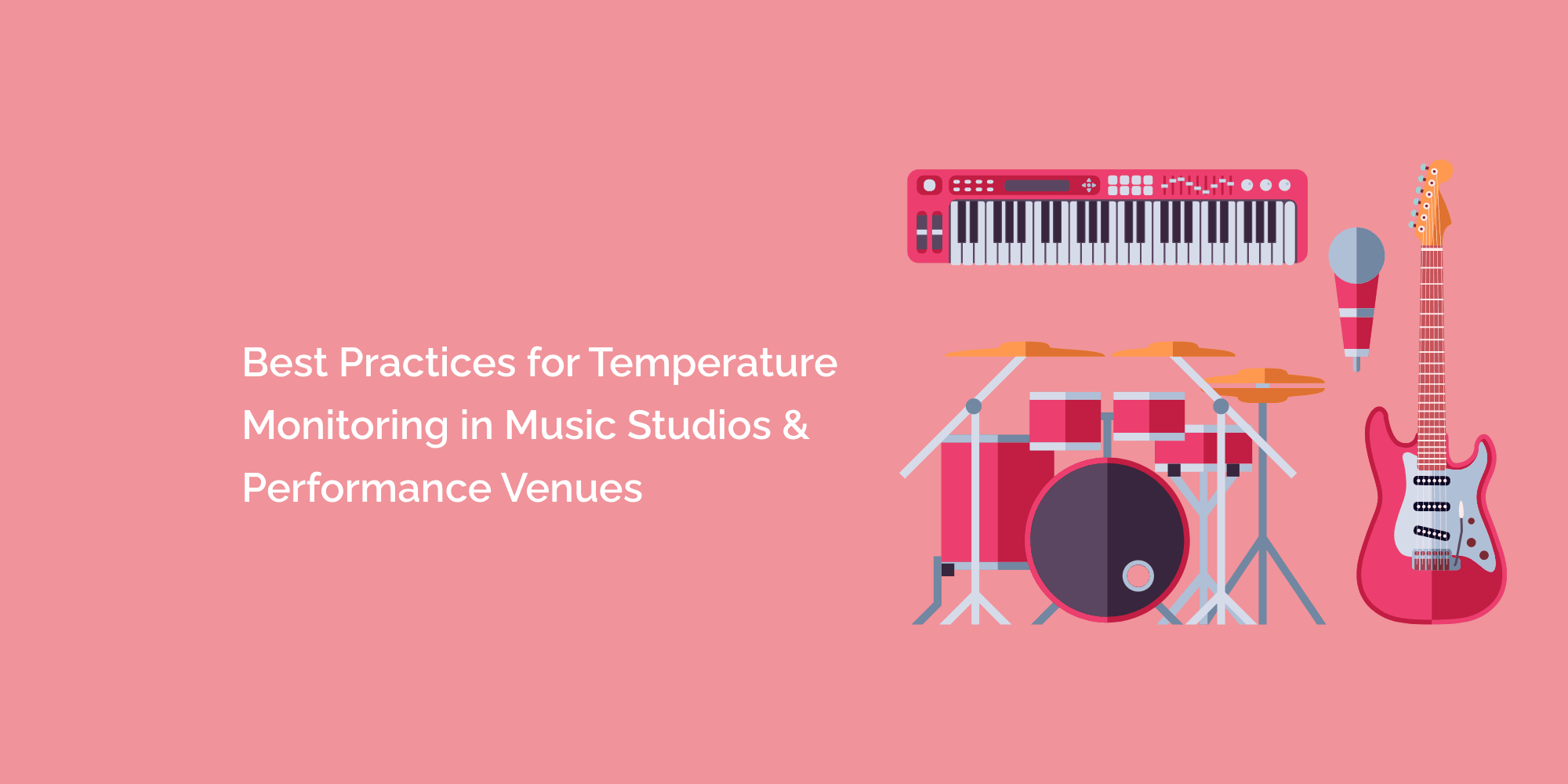Temperature control is crucial in maintaining optimal conditions for music studios and performance venues. Fluctuations in temperature can affect the quality and performance of musical instruments and audio equipment, impacting the overall sound production. Temperature monitoring is essential to ensure a conducive environment for musicians and optimal sound quality. This detailed blog will explore the best practices for temperature monitoring in music studios and performance venues. From strategic sensor placement and calibration to utilizing technology and implementing preventive measures, these practices will help maintain stable temperature conditions, protect equipment, and create an optimal atmosphere for musicians and audiences.
The Importance of Temperature Control in Music Studios and Performance Venues
Temperature control is essential in music studios and performance venues to maintain optimal instrument, audio equipment, and sound quality conditions. Temperature fluctuations can affect instrument performance and good production, making temperature monitoring crucial.
Understanding Optimal Temperature Ranges for Music Spaces
Understanding the recommended temperature ranges for instruments and equipment is vital. Factors like the type of instruments, materials used, and manufacturer recommendations influence the temperature requirements. Research and consultation with instrument manufacturers can help identify the optimal temperature ranges.
Strategic Placement of Temperature Sensors
Strategic sensor placement ensures accurate temperature monitoring. Identify critical areas that require monitoring, such as instrument storage rooms, performance spaces, or control rooms—place sensors near instruments and equipment to obtain accurate readings.
Calibration of Temperature Monitoring Devices
Regular calibration of temperature monitoring devices is essential for accuracy. Calibration methods include using reference thermometers, professional calibration services, or internal calibration features in some devices. Follow manufacturer guidelines and schedule routine calibration to maintain accuracy.
Continuous Monitoring and Real-time Alerts
Automated temperature monitoring systems offer continuous monitoring and real-time alerts for temperature deviations. These systems provide instant notifications, allowing prompt action to rectify temperature fluctuations and prevent equipment damage.
Utilizing Data Logging and Analytics
Data logging and analytics enable the collection and analysis of temperature data over time. Identifying patterns and trends helps in making informed decisions regarding temperature control. Analyzing historical data can reveal temperature variations and facilitate preventive measures.
HVAC Systems and Temperature Regulation
Proper maintenance and calibration of HVAC systems are crucial for temperature regulation. Regular HVAC system inspections and maintenance ensure optimal performance. Incorporating zoning and control systems provides precise temperature regulation for different areas within the music space.
Insulation and Thermal Barriers
Insulating walls, ceilings, and floors help maintain stable temperatures within music spaces. Weatherstripping and sealing doors and windows minimize temperature fluctuations caused by outside elements, ensuring a controlled environment.
Prevention of Heat Sources and Sunlight Exposure
Avoid placing instruments and equipment near heat-generating sources to prevent temperature increases. Shielding windows from direct sunlight with curtains or blinds minimizes the impact of solar heat gain on temperature levels.
Training and Awareness for Staff and Musicians
Educating staff members about the importance of temperature monitoring and instrument care is vital. Instructing musicians on proper instrument storage and handling techniques ensures they contribute to maintaining optimal temperature conditions.
Emergency Preparedness and Backup Systems
Having backup cooling systems in place is crucial for emergencies and power outages. Portable air conditioners or cooling fans can help maintain temperature stability during unexpected situations.
Certainly! Here are some frequently asked questions (FAQs) regarding temperature monitoring in music studios and performance venues:
Why is temperature monitoring necessary in music studios and performance venues?
Temperature monitoring is crucial in music studios and performance venues because temperature fluctuations can impact instrument and equipment performance and sound quality. Monitoring helps ensure a stable and conducive environment for musicians and optimal conditions for instrument preservation.
What is the optimal temperature range for music spaces?
The optimal temperature range can vary depending on the type of instruments and equipment present. Generally, a temperature range of 68-72°F (20-22°C) is recommended for most devices and audio equipment. However, it's essential to consult instrument manufacturers and industry guidelines for specific recommendations.
How should temperature sensors be strategically placed in music spaces?
Temperature sensors should be strategically placed in critical areas that require monitoring, such as instrument storage rooms, control rooms, or performance spaces. Sensors should be placed near instruments and equipment to obtain accurate readings and ensure temperature monitoring represents the actual conditions.
Conclusion
Implementing best practices for temperature monitoring in music studios and performance venues is crucial for maintaining optimal conditions and preserving the integrity of instruments and audio equipment. Strategic sensor placement, calibration, continuous monitoring, insulation, prevention of heat sources and sunlight exposure, staff and musician training, emergency preparedness, compliance with industry standards, and regular maintenance are critical components of adequate temperature control. By following these practices, music studios and performance venues can create an environment that supports the longevity of instruments, enhances sound quality, and ensures an optimal experience for musicians and audiences alike.








